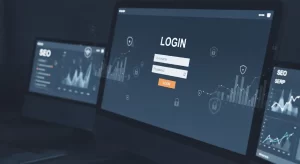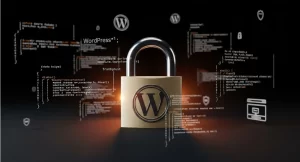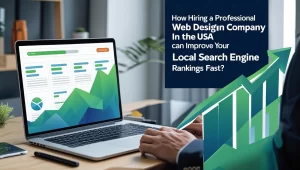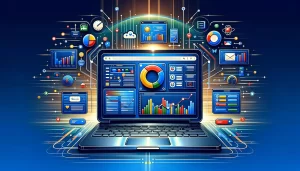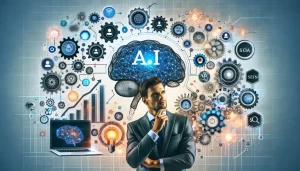Table of Contents
ToggleAs the public becomes more aware of sustainability issues, their buying and investing habits are shifting towards environmentally and socially conscious options. Companies also recognize the importance of prioritizing their ESG (Environmental, Social, And Governance) practices and meeting UN Sustainable Development Goals. This post examines the potential of disruptive technologies, specifically IoT(Internet Of Things), to enhance ESG performance and contribute to UN SDGs (Sustainable Development Goals).

ESG consists of three fundamental components.
Environment: The parameters of the environment encompass a multitude of factors, ranging from policies addressing the impact of climate change to the conscientious management of natural resources, such as energy and fuel usage, water conservation, and the treatment of animals. Additionally, the responsible control of waste, pollution and the preservation of biodiversity all play a pivotal role in safeguarding the planet.
Social: The social aspect encompasses a multitude of criteria, including but not limited to diversity and equality, employee relations, the well-being and safety of both workers and citizens, non-discriminatory policies, opportunities for training and education, robust security measures, protection of human rights, and optimal working conditions that preclude the use of child labor.
Governance: The examination of governance involves a thorough evaluation of various factors such as the diversity of the board, any instances of bribery or corruption, ethical considerations, the management of risk, procurement practices, taxation, and clear and transparent accounting methods. Additionally, the evaluation encompasses the integrity of the organization, its political lobbying practices, and the compensation and remuneration offered.
The realm in which technology solutions hold the most promise is undoubtedly within the environmental sphere. Specifically, the implementation of use cases based on IoT, such as building management and smart grids, have proven to be highly efficient at curbing energy and fuel consumption, as well as reducing CO2 emissions. Additionally, the report delves into the broader ESG landscape, encompassing issues such as ethical labor practices, wildlife conservation, and the preservation of aquatic life.
As leaders and experts converge to deliberate on how best to address climate change and foster sustainability, poverty, food security, and global warming remain paramount long-term concerns. The challenge of sustainable development confronting our world necessitates innovative solutions, with technology poised to play a pivotal and constructive role.
The IoT is fundamentally changing our lifestyles and consumption patterns, with significant implications for sustainable development. As a vital catalyst for progress, it has the potential to drive the achievement of the ambitious UN Sustainable Development Goals by 2030 for both individual and industrial stakeholders.
In the year 2015, all members of the United Nations came together to adopt the remarkable 2030 agenda for sustainable development. This comprehensive plan serves as a guide toward achieving a world of peace and prosperity for humanity and the environment. At its core, the agenda presents 17 Sustainable Development Goals (SDGs), which demand immediate action from all nations, irrespective of their level of development, in a unified global effort.
The Complete Eradication Of Hunger
Inhabiting this planet are in excess of 8 billion souls. The World Food Programme has disclosed that approximately 768 million individuals suffered from chronic hunger in 2020, a number which escalated to 828 million in 2022. To realize the aspiration of eradicating hunger, it is imperative to enhance the efficiency of farming, diminish the squandering of food, and enhance the facilities for storing and distributing food.
The persistent and unrelenting sensation of hunger is recorded in a chronological manner.
The implementation of smart farming practices has brought about significant benefits for farmers, such as the reduction of waste and the increase in productivity. Advanced sensors are utilized to constantly monitor weather patterns, soil quality, and the condition of crops, providing real-time data for analysis and action. This approach has resulted in the conservation of billions of gallons of water and gigawatts of electricity while simultaneously enhancing farm output.
Remarkably, Agrisource Data, an innovative start-up from Africa employing cutting-edge technologies such as IoT and AI for farm analytics, reports a staggering 772 million liters of water saved over the past six years, coupled with an impressive 9% average boost in yield.
Through the monitoring of environmental conditions such as temperature and humidity, the reduction of wastage during storage and transportation can be achieved. By utilizing real-time data, corrective measures can be taken, ultimately resulting in a decrease in food waste. Additionally, the implementation of IoT technology in livestock monitoring allows for the safeguarding of animal health and the prevention of disease transmission for farm owners.
The Attainment Of Robust Health And An Overall Sense Of Well-being
As the world’s population ages, the welfare of the elderly has become a pressing issue. Statistics from the World Bank reveal that almost 10% of the global population is over the age of 65, with some developed countries already reaching 20%. Consequently, it’s become crucial to shift the focus of care from hospitals to homes, and connected health via IoT is emerging as a solution. Through IoT devices, seniors can enjoy safer and more independent living, with remote monitoring capabilities like motion sensors, fall detection, and panic buttons, providing caregivers with peace of mind.
The issue of air pollution is a crucial aspect of our well-being. To tackle this issue proactively and in a timely manner, it is essential to obtain accurate measurements of air quality at a hyper-local level. However, this can be a costly endeavor. One possible solution is to install IoT sensors on vehicles, such as garbage trucks, buses, and government vehicles, which frequently travel through residential and urban areas.
By adding air quality sensors to these vehicles, along with GPS technology, it is possible to collect data without the need for numerous fixed sensors. Few Organizations have already tested this approach on the Isle of Man, successfully delivering hyper-local measurements in a cost-effective manner.
The emergence of wearables, with a special emphasis on smartwatches, has instilled a newfound drive within individuals to prioritize their well-being. Recent research has demonstrated that within a mere 13 weeks of acquiring a smartwatch, the average individual’s daily step count surges by an impressive 2,000.
The Availability Of Clean Water
The pursuit of clean water and adequate sanitation, as outlined in the sixth Sustainable Development Goal, is a crucial endeavor for the betterment of our global community.
As per the findings of UNICEF and WHO, a staggering one-third of the population worldwide lacks access to safe drinking water, and this leads to over 1.2 million fatalities annually. However, the power of IoT can play a pivotal role in facilitating the goal of safe water for all by reducing wastage, monitoring quality, and offering innovative solutions for running water. In a pursuit to make this a reality, eWATER, a water operator based in sub-Saharan Africa, has combined the prowess of mobile money, IoT, and Near Field Communication (NFC) technologies with offering clean and reasonably priced water which is accessible round-the-clock.
SES Water and Vodafone UK have joined forces to create a revolutionary NB-IoT system aimed at conserving water lost through leakage in underground pipes. The initiative seeks to tackle the staggering 23% of the water that is currently lost and has set a target to reduce this figure by 15% over the next five years. Furthermore, the project aims to halve this percentage by 2045 in order to maximize the preservation of this precious resource.
In the realm of sanitation, the implementation of IoT-powered intelligent solutions is geared towards enhancing efficiency in waste collection and management. By optimizing the routes of waste collection, not only can fuel consumption be curbed, but also the timely clearance of waste dumpsters can be achieved.
Inexpensive And Pristine Energy Sources
As the globe grapples with escalating pollution levels, it has become abundantly clear that energy is a primary contributor to this phenomenon. Nonetheless, tireless endeavors are underway to generate renewable energy sources that are both eco-friendly and economically viable.
Renewable energy’s dependability and production expenses have been a topic of apprehension. However, the convergence of IoT, AI, and ML technologies has been instrumental in enhancing reliability and diminishing operating costs. The emergence of intelligent grids has proven to be a blessing for eco-friendly energy as it integrates renewable energy with conventional energy sources, thereby elevating the steadiness of the energy supply.
A plan was set in motion to decrease the island’s dependence on non-renewable energy sources and decrease electricity expenses by 40%. The council of the island implemented 400 kW of solar panels across governmental and residential structures, alongside the use of Hitachi’s IoT platform, enabling the distribution of renewable energy and the monitoring of carbon emissions.
The upkeep of field equipment, such as wind turbines, can be both costly and time-consuming. However, with the aid of Internet of Things (IoT) devices, data can be captured and transmitted to the cloud. There, artificial intelligence (AI) algorithms analyze real-time sensor readings in comparison to historical data to evaluate if the machinery is functioning properly.
The Aim Of Creating Sustainable Energy Through Innovation
Power plant personnel and field technicians can access this data remotely to discern if repairs are required. This shift towards prescriptive maintenance can significantly reduce operational expenses. Advanced IoT systems may even incorporate edge IoT devices capable of processing sensor data and controlling machinery without human intervention.
Through the use of intelligent energy meters, the acquisition of real-time consumption information is made possible. Through the application of analytical and data processing tools, electricity providers can detect trends and patterns concerning peak load circumstances. In the upcoming years, approximately 77% of European households will possess smart electric meters, and India plans to implement 250 million of them by 2025. Not only will these smart meters bring advantages such as precise billing to consumers, but they will also assist planners in utilizing real-time data and analytics.
The triumvirate of industry, innovation, and infrastructure stands as a beacon of progress and modernity. These three foundations are upon which society builds and advances toward a prosperous future.
The goals for 2030 include creating infrastructure and industry that are resilient and sustainable, as well as fostering innovation. IoT has been primarily used in industry and infrastructure, with around 35-40% of current IoT projects focusing on these areas. The potential applications for IoT in achieving these goals are countless, such as enabling preventive maintenance and improving navigation in the automotive industry.
In factories, connected operations can increase productivity, reduce energy consumption, and save costs. One example of a company utilizing IoT is Arch Systems, which provides connected systems for real-time factory data collection. By extracting actionable insights and enabling predictive maintenance, these systems help factories optimize their processes and improve uptime.
Smart Solutions For Smart Cities And Communities
In order to achieve a truly livable and thriving urban environment, we must prioritize the development of sustainable cities and communities. This requires a holistic approach, encompassing everything from green infrastructure and renewable energy sources to equitable access to education and healthcare.
By leveraging technology and innovation, we can create a future where our cities are not only environmentally sound but socially just and economically prosperous as well. It works together so that we can build a sustainable future for generations to come.
As the world progresses, urbanization has become an unavoidable reality. It is projected that by 2030, over 60% of the population will reside in cities. This trend is particularly evident in emerging economies such as India, China, and Indonesia. Unfortunately, this rapid urbanization has resulted in cities being responsible for an alarming 70% of carbon emissions.
The need for sustainable cities is more important than ever before if we hope to combat the looming threat of climate change. Fortunately, the Internet of Things (IoT) can play a crucial role in creating sustainable cities by providing services and facilities that are tailored to the needs of citizens.
The integration of IoT and other modern technologies into the urban infrastructure has the potential to transform the cityscape. By implementing intelligent traffic signals, time and fuel can be saved while congestion is alleviated. Additionally, smart waste bins can alert authorities when they are full, optimizing collection routes. Security cameras can also enhance urban safety. A crucial aspect of sustainability is reducing fossil fuel consumption, which Europe has made significant progress towards through the installation of connected charging stations and the subsequent rise in electric vehicle adoption.
Roadmap To Sustainable Care!
We can work towards sustainability without sacrificing development and industry. We just need to use technology the right way and have the right mindset. And guess what? The IoT is among the biggest helpers in making this happen!
There’s this report that talks about twelve areas where digital innovation can really make a difference in helping organizations reach their sustainability goals. They call it the ‘Clean Dozen.’ Some of these areas include Fleet Operations, Supply Chains, Smart Cities, Smart Grid, and Smart Buildings.
The report has a bunch of examples of how these projects can help businesses reduce their electricity, fuel, and water consumption, meet their ESG goals, and even improve their overall business outcomes. It’s pretty cool!
Are you seeking one of the best online marketing companies to elevate your business to a new level? You can reach out to AdsRole for advanced marketing solutions that will help you reach sustainable goals with proper planning and strategy implementation. Call us today for more details and exciting offers.
By Shubham Srivastava
He is an experienced tech blogger, software developer, and content writer who loves to listen to music, read books, and generate new innovative ideas. He is introvert to the core and loves to observe or analyze to get to the bottom of things. He has been writing and publishing articles on a range of niches, from digital marketing, science, and technology, economics, business, finance, politics, current affairs, international relations, etc.


